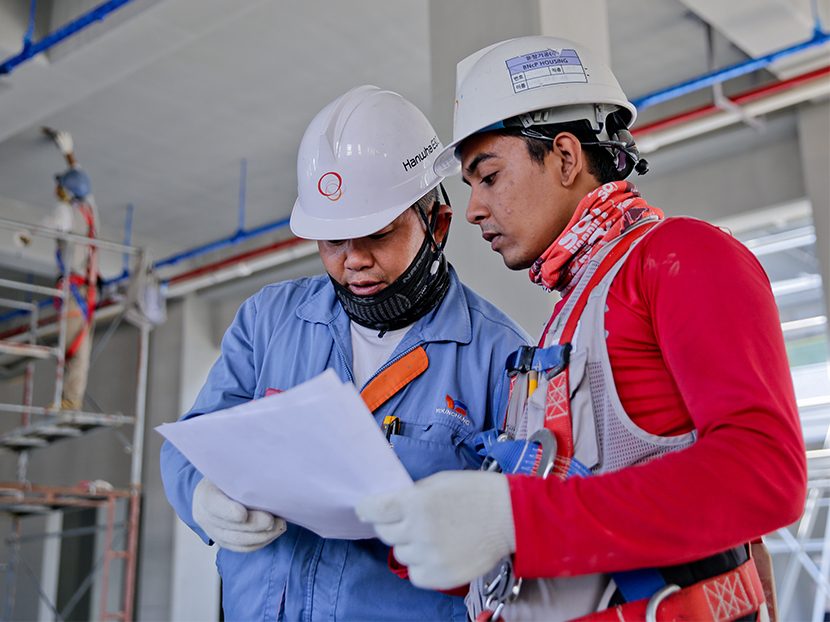Digital Exclusive: Design-Build and Knowing What Your Clients Want

Rumblings about a recession on the horizon are starting to make company leaders a bit nervous, but many are just too busy keeping up with current work to start thinking about contingency planning. In fact, the constrained labor situation, coupled with material price increases, compressed project schedules and ongoing margin compression, is creating more risk for E&C firms today—and right when we find ourselves at the top of the market. As we like to say, “Contractors don’t starve to death; they die from gluttony. They get too much work, too fast, with inadequate resources, and then they get into financial trouble and run out of cash.”
Findings from our latest AGC/FMI Risk Study1 indicate that a potential economic slowdown is top of mind for most participants. In fact, back in 2016, only 8 percent of participants listed economic slowdown as a risk— today that statistic has jumped up to 58 percent. With growing concerns surrounding the consequences of a potential downturn, some organizations have started considering next steps to reduce risk and limit exposure. For many contractors, one of those strategies includes specializing in design-build project delivery models that can offer turnkey, one-stop solutions for owners. In this article, we highlight recent trends in the growing design-build market and provide recommendations on how contractors can set themselves up for success with this delivery model.
Gaining in Popularity
In recent years, the use of design-build has grown significantly across various market sectors and geographies, especially in the transportation sector. A method of project delivery whereby the design and construction phases are combined into a single contract—and the designer and contractor work together from the beginning—design-build helps streamline projects by eradicating the need for multiple contracting efforts and promotes a culture of collaboration from the start.
Design-build differs from the traditional design-bid-build approach, whereby project owners outsource the design work to an architectural/engineering firm on a negotiated-price basis and then contract out construction services on a low-bid basis. These and other project delivery systems may not only introduce inefficiencies during the contracting process, but also miss some of the opportunities provided by design-build when implemented correctly, including increased utilization of innovative ideas from the private sector and an overall reduction in the design and construction cycle.
For these and other reasons, a project delivery method that was considered “radical” just 25 years ago today represents nearly half of America’s construction projects (and continues to grow). In fact, according to the FMI/DBIA Design-Build Utilization Study, the project delivery method will comprise 44 percent of construction spending between 2018 and 2021, during which time such construction spending will grow by 18 percent and reach over $320 billion.
Of the customer segments that use design-build, manufacturing, highway/street and education will represent the greatest percentage of design-build construction spending over the next three years. Geographically, the Mountain (6.3 percent), Pacific (6.1 percent) and South Atlantic (6.2 percent) census divisions will yield the highest growth rates between 2018 and 2021.
Owners have traditionally employed design-bid-build as the project delivery method of choice. As owner needs and project demands have changed, owners have increasingly opted to employ alternative delivery methods based on specific project factors. According to our research, owners identified “delivery schedule” as the greatest decision factor, followed by their own goals and objectives, both of which are highly influential in project delivery method selection.
As design-build’s popularity has increased, the educational process associated with this delivery method has also expanded. A sustained emphasis toward educating owners and project stakeholders on the process and benefits associated with design-build, for example, has facilitated continued adoption and greater utilization industrywide. On the public side, increased design-build legislation has further helped push the adoption of such projects. On the private side, owners tend to choose it for unique and challenging projects that require a lot of collaboration.
Overall, owners received significant value from design-build when the approach was employed on larger and more complex projects. These projects allowed for greater opportunity to provide project innovations and subsequent cost savings. In addition to larger and more complex projects, design-build utilization continues to expand into projects of less than $25 million, as owners continue to learn of its benefits.
The Best Ideas Are Born
Due to its popularity, design-build is a project delivery method that’s well-documented and highly publicized, both online and offline. On its website, Layton Construction highlights several of its successful design-build projects, including the Utah Valley University Library and Data Center, where it worked with the state of Utah’s Division of Facilities Construction and Management and school representatives to construct a high-efficiency library, auditorium and data center for the new Utah Valley university.
“The design-build team worked closely to understand the needs, goals and objectives of the state and university and incorporated them into the final product,” the company states. “The team was careful to provide as much building as possible within the given budget and time frame.” The first facility to incorporate Utah’s new high-performance building standard, the $42 million energy-efficient and environmentally friendly facilities features a large data center, lecture halls, private group study rooms and a café.
In another example, Layton Construction developed the RiverPark Corporate Center for The Argent Group, a first-time design-build user. “Argent relied heavily on Layton’s vast experience to assist in all aspects of construction from design to completion,” the company states on its website. The 1.2 million-square-foot business park is home to 15 office and retail buildings—all of which were design-build projects.
This blog originally appeared on www.fminet.com. Follow this link to continue reading.




